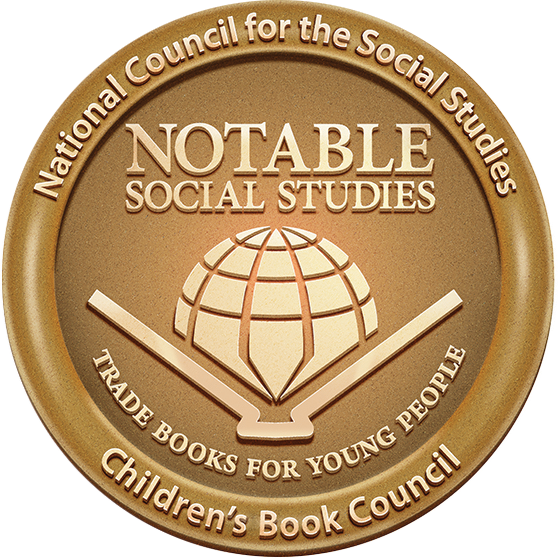This Very Tree: A Story of 9/11, Resilience, and Regrowth
Written and illustrated by Sean Rubin
A deeply moving portrait of the Callery pear tree that survived the attacks on September 11, from Eisner Award-nominated author-illustrator Sean Rubin.
In the 1970s, nestled between the newly completed Twin Towers in New York City, a Callery pear tree was planted. Over the years, the tree provided shade for people looking for a place to rest and a home for birds, along with the first blooms of spring.
On September 11, 2001, everything changed. America was gravely wounded, as was the tree. This is the triumphant story of a tree that survive the tragedy, and of nation recovery.
Told from the tree’s perspective, This Very Tree is a touching tribute to those we lost, and to those who, after the towers fell, picked up the pieces, planted a forest, and built a new city.
Available on Bookshop.org
The Horn Book, Starred Review
★ “Rubin’s lively and energetic paneled art takes the focus quickly from destruction and desolation to growth and renewal, and the spare, moving account is perfectly suited to young audiences. A volume that could be part of any unit on 9/11 for children, or a lesson on resilience.” —The Horn Book
"A poignant tribute to a city’s resilience and a powerful introduction to the topic for young readers." ―Publishers Weekly
2022 ALSC/ALA Notable Book
Kirkus, Starred Review
★ A resonant, beautifully rendered testament to life and renewal.
“The simple, quietly touching text focuses on the tree as a symbol of regeneration rather than devastation. The splendid illustrations include several spreads that depict, in a stark yet nonfrightening manner, scenes of chaotic destruction. Many also highlight vertical lines and aerial perspectives, prompting viewers to focus attention upward, aptly symbolizing soaring architecture and the tree’s growth and also helping readers understand the rise of hope and spirits in the wake of tragedy. Additionally, the illustrations’ delicate lines and muted palette have a freshness and airiness that suits the theme of life’s rebirth, echoed in the tree’s final reassurance that “spring will come.” People are portrayed diverse in gender, race, ethnicity, and physical ability. A heartfelt author’s note and historical material conclude the book.”
“Delicate line drawings, muted watercolors, exquisite panel work, and a variety of different perspectives bring the Survivor Tree and its regrowth and resiliency to life in an age-appropriate fashion. Of particular note is Rubin’s use of panels. (Rubin was nominated for an Eisner Award for his graphic novel Bolivar, and his skills as a sequential artist are on full display here.) His sequential art tells the story of the attacks on the World Trade Center; few words are needed. Several pages later, he uses a series of eight panels to show how the tree is recovering at the same time as the city is rebuilding. It's a brilliant use of design. Also exceptional is Rubin’s palette. We would expect a picture book about a Callery pear tree throughout the seasons to make great use of color, and it's fascinating to see how Rubin pulls it off. The colors serve as symbols that set the tone for the story and its themes. The darks are dark for a reason, while the different hues of green offer the hope of rebirth” —Calling Caldecott
“The gentle line drawings and watercolor illustrations depict a beautiful city and a diverse population. Illustrations treat the events of 9/11 with care; without becoming graphic, the story is evident… What an unusual way to capture that day; this beautiful book deserves a spot in elementary collections across the country.” -School Library Journal
"Rubin's inspiring tale uses a displaced―and eventually reinstated―tree to symbolically reflect on the destruction of the World Trade Center on 9/11 and the rebuilding of New York City over time...Particularly striking is the growth of the tree and the new tower at the site of the World Trade Center, shown in a series of parallel illustrations. Although the circumstances are different, this story of urban resilience and rebuilding remains relevant today." ―Booklist


